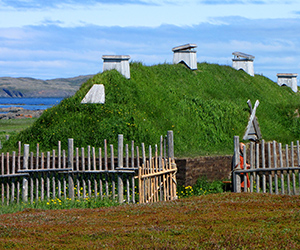CANADA HISTORY
Charlottetown

By 1992, Prime Minister Brian Mulroney was determined to attempt another constitutional agreement that would finally bring Quebec into Confederation as a willing partner, an endeavor that he hoped would succeed where Pierre Trudeau's 1982 Constitution had failed. This new attempt, known as the Charlottetown Accord, came after the collapse of the Meech Lake Accord in 1990, a previous effort at constitutional reform which was also intended to secure Quebec’s formal commitment to Confederation. With the failure of Meech Lake, nationalist sentiment in Quebec surged, further deepening the province's sense of alienation from the rest of Canada.
Mulroney, whose political career had been marked by efforts to bridge divides between Quebec and English Canada, felt an urgency to act. He saw himself as a potential reconciler of Canadian Confederation, and the Charlottetown Accord became the centerpiece of that ambition. However, what made the Charlottetown process unique was Mulroney's decision to put the constitutional agreement to a national referendum, rather than simply seeking approval from provincial legislatures. This approach would lead to one of the most profound moments in Canadian political history.
Background and Formation of the Charlottetown Accord
Following the Meech Lake Accord’s failure, Quebec embarked on a path of introspection, establishing several committees to define what it wanted from Confederation. In parallel, Mulroney’s federal government initiated a series of commissions, including the Beaudoin-Edwards Commission and the Spicer Commission, to assess the broader issues of constitutional reform across Canada. Mulroney appointed Joe Clark, a former Conservative Prime Minister and a trusted political ally, to lead the effort to negotiate a new constitutional agreement that would involve not only the federal and provincial governments but also Indigenous groups.
By August 1992, after extensive discussions, compromises, and concessions, the Charlottetown Accord was born. The agreement was supported by provincial premiers, the federal government, Indigenous leaders, and a broad cross-section of Canadian political actors. It was an ambitious document that sought to address longstanding tensions between federal and provincial powers, accommodate Quebec’s demands for recognition as a "distinct society," and improve Indigenous relations through a formal recognition of Indigenous self-government.
Key Provisions of the Charlottetown Accord
The Charlottetown Accord aimed to resolve some of the core tensions in Canadian federalism by reconfiguring the balance of power between Ottawa and the provinces. One of its most notable provisions was the formal recognition of Quebec as a "distinct society." This clause aimed to address Quebec's desire for a special status within Canada that reflected its unique cultural and linguistic identity. This recognition was seen as crucial for persuading Quebecers to remain part of the Canadian federation, after years of feeling marginalized within the larger national framework.
The Accord also proposed Senate reform, which had long been a point of contention. Under the proposal, the Senate would be restructured to become more equitable, with six senators elected from each province. Special provisions would be made for Indigenous representation in the Senate, giving Indigenous groups a formal role in federal governance. This was a significant step toward reconciling the longstanding grievances of Indigenous peoples in Canada, who had historically been excluded from meaningful participation in political processes.
In addition to Senate reform, the Charlottetown Accord sought to reduce federal powers of disallowance and reservation, mechanisms that had previously allowed the federal government to override provincial legislation. These powers had been a sore point for provinces, particularly Quebec, which viewed them as encroachments on provincial autonomy. The Accord would have given provinces greater control over areas such as culture, immigration, labour, and resource management.
On the Indigenous front, the Accord recognized Indigenous self-government as a right, rather than a privilege granted by the federal government. This was a landmark moment in Canadian history, as it acknowledged Indigenous communities' inherent right to govern themselves within Canada’s constitutional framework. It was seen as a major step forward in addressing the historical marginalization of Indigenous peoples, who had long been subject to federal control.
A National Referendum
Mulroney's decision to hold a national referendum on the Charlottetown Accord was a departure from past practices, where constitutional changes were typically approved through provincial legislatures. This time, given the deep-seated divisions within the country, Mulroney believed it was crucial to have direct public approval for such a sweeping constitutional agreement. Additionally, British Columbia, Alberta, and Quebec had passed laws requiring referendums on constitutional change, making a national referendum almost unavoidable.
Initially, the Charlottetown Accord appeared to have widespread support. All three major national political parties—the Progressive Conservatives, the Liberals, and the New Democratic Party (NDP)—endorsed the agreement. Provincial premiers, Indigenous leaders, and many media outlets also expressed their support. Public opinion polls suggested that a majority of Canadians were in favor of the Accord, and there was cautious optimism that the referendum would pass.
Opposition and Trudeau’s Intervention
However, the tide of support for the Charlottetown Accord began to shift when former Prime Minister Pierre Trudeau emerged as a vocal opponent of the agreement. Trudeau, who had led the patriation of the Constitution in 1982 and was a staunch defender of a strong federal government, saw the Charlottetown Accord as a dangerous concession to provincial and special interests. In an article in Maclean’s magazine, Trudeau argued that the Accord weakened the power of the federal government to act in the national interest and would lead to a fragmented Canada, with provinces exerting too much control over critical areas of policy.
Trudeau’s intervention was particularly influential in Quebec, where his stature as the champion of Canadian unity still resonated deeply with many federalists. He framed the Accord as a betrayal of the principles of strong federalism, and his arguments gained traction among Canadians who feared that the decentralization proposed in the Charlottetown Accord would weaken national unity. At the same time, sovereigntists in Quebec argued that the Accord did not go far enough in granting Quebec autonomy, creating a peculiar alliance of opposition from both federalists and separatists.
On the opposite end of the political spectrum, some groups felt that the Accord did not go far enough. Critics on the right argued that the Senate reforms were too modest and that the recognition of Indigenous self-government was too far-reaching, while Western Canada felt that it did not get enough say in the process.
The Referendum and its Fallout
On October 26, 1992, Canadians voted on the Charlottetown Accord. Despite the initial optimism, the referendum was a resounding failure. The four Western provinces, Nova Scotia, and Quebec all rejected the Accord, and the national vote overall showed a clear rejection. The No side won with 54.3% of the vote, compared to 45.7% in favor of the Accord. In Quebec, where the "distinct society" clause was supposed to placate nationalist sentiments, the Accord failed to win over the population, with 56.7% voting against it. The defeat of the Charlottetown Accord was a major blow to Mulroney’s efforts to reconcile Quebec’s place within Confederation and symbolized the deep divides within the country.
Importance and Legacy
The failure of the Charlottetown Accord marked a watershed moment in Canadian constitutional history. It exposed the deep fault lines between regions, between federalists and sovereigntists in Quebec, and between Indigenous and non-Indigenous Canadians. The referendum revealed that finding a national consensus on constitutional matters was far more challenging than Mulroney or other political leaders had anticipated. Moreover, it illustrated that Quebec’s relationship with the rest of Canada remained fraught and unresolved.
The rejection of the Accord also had significant political ramifications. Mulroney’s inability to secure constitutional reform undermined his standing as Prime Minister, and his government’s popularity plummeted in the wake of the referendum’s defeat. The Progressive Conservative Party would later suffer a catastrophic defeat in the 1993 federal election, effectively ending Mulroney’s political career.
In Quebec, the failure of the Charlottetown Accord intensified nationalist sentiment and contributed to the rise of the Parti Québécois, which would later hold a second referendum on Quebec sovereignty in 1995. The referendum came close to succeeding, and Quebec’s place within Canada remained a highly contentious issue.
Nationally, the failure of the Charlottetown Accord led to a growing disillusionment with large-scale constitutional reforms. It was clear that trying to negotiate a "grand bargain" that satisfied all regions, provinces, and interest groups was exceedingly difficult. The constitutional debates of the late 1980s and early 1990s—Meech Lake and Charlottetown—highlighted the complexities of governing a diverse, regionally divided country like Canada.
In the end, while the Charlottetown Accord failed to pass, its legacy endures as a critical moment in the evolution of Canadian federalism, Indigenous rights, and Quebec nationalism. It revealed the challenges of constitutional change in a country as vast and varied as Canada and underscored the enduring tensions between provincial autonomy and national unity.
| Prov/Terr | Approval | Rejection |
| Alberta | 39.8 | 60.2 |
| BC | 31.7 | 68.3 |
| Manitoba | 38.4 | 61.6 |
| New Brunswick | 61.8 | 38.2 |
| Newfoundland | 63.2 | 36.8 |
| Nova Scotia | 48.8 | 51.2 |
| Ontario | 50.1 | 49.9 |
| PEI | 73.9 | 26.2 |
| Quebec | 43.3 | 56.7 |
| Saskatchewan | 44.7 | 55.3 |
| NWT | 61.3 | 38.7 |
| Yukon | 43.7 | 50.4 |
| Total | 49.6 | 50.4 |
Constitutional change was dead for the foreseeable future and nationalism in Quebec given a boost due to the constant debate and the offensive remarks and opinions voiced during the process. Mulroney had failed, substantially due to Trudeau's continuing ability to dictate opinion regarding Quebec and Federalism and partially due to his plummeting support in the polls. He would not run for office again and has generally been regarded with distain since leaving office.
Cite Article : www.canadahistory.com/sections/documents




